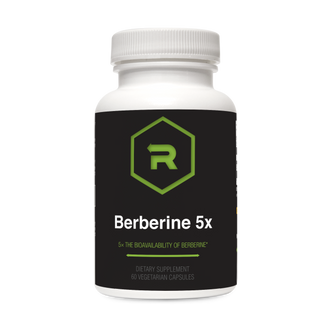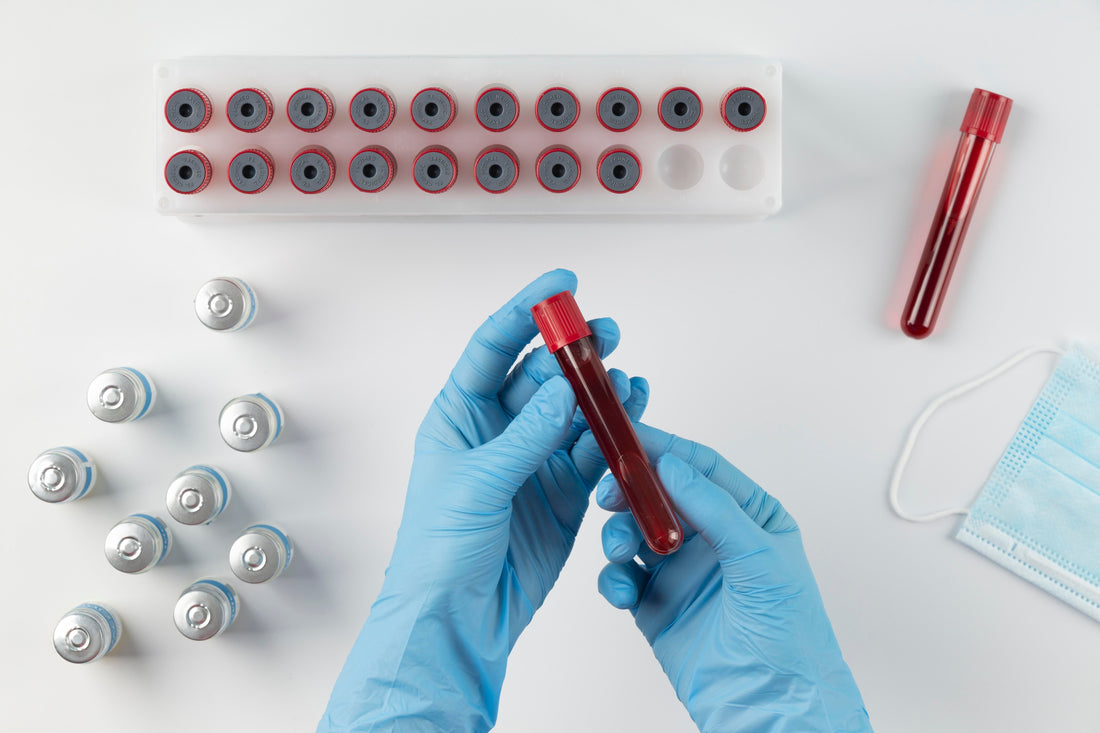hs-CRP
CRP is an acute phase reactant and is a non-specific marker of inflammation. Cardiovascular disease is an inflammatory process. Elevated CRP is associated with an increased risk for the development of ischemic cardiovascular events. CRP does fluctuate and could be repeated in 2-4 weeks in order to establish a baseline level. Elevated CRP correlates with the presence of metabolic syndrome, insulin resistance, endothelial dysfunction, and impaired fibrinolysis
Reducing global CHD risk by aggressive treatment of the tradition risk factors by established therapies may also be beneficial.
Goal – < 1.0 mg/L
What to do to improve it – lifestyle changes, including weight reduction, smoking cessation, regular exercise, diet rich in plant sterols, viscous fiber, and almonds have all been shown to decrease CRP. Fish oil (Omega-3s) may also reduce CRP.
Other therapies include focusing on gut health as it is a common source of hidden inflammation and should be addressed. You can read more about how you can work on your gut health.
Myeloperoxidase
Myeloperoxidase (MPO) is a marker of inflammation and oxidative processes that may lead to atherosclerotic plaque vulnerability as well as left ventricular remodeling. In apparently health individuals elevated values of MPO are associated with an approximately 2x increased risk for major adverse cardiovascular events (MACE; heart attack, stroke, or cardiovascular death). Risk rates for prognosis in the absence of acute symptoms (chest discomfort, etc), are shown in the report: >= 550 pmol/L = high risk; 400-549 = intermediate risk; and < 400 = low risk.
In the setting of chest pain or discomfort, markedly elevated values are associated with increased risk for MACE in the ensuing 6 months. Moreover, the relative risk for MACE increases with increasing levels of MPO. In the presence of chest discomfort, values <63 pmol/L are normal, 633-894 pmol/L = lower risk for near term MACE, 894-1657 = intermediate risk for MACE and values > 1657 = high risk for MACE in the ensuing 6 months.
Elevated MPO levels in the setting of heart failure are associated with adverse events above and beyond (independently of) that of NT-proBNP concentration. The difference between Lp-PLA2 and MPO is their location relative to the arterial wall and their function.
MPO is on the outside of the vessel wall and is a leukocyte derived enzyme that catalyzes the formation of oxidants and results in the formation of oxidized LDL (oxLDL). Lp-PLA2 is produced by macrophages and circulates in association with LDL particles. Inside the vessel wall Lp-PLA2 on oxidized LDL specifically cleaves oxidized phospholipids to produce bioactive intermediates (lysophosphatidylcholine and oxidized free fatty acids) that up regulate inflammation. Lp-PLA2 is indicative of vulnerable plaque.
Thus, when both MPO and Lp-PLA2 are elevated, it creates a situation where oxidized phospholipids (oxPL) are formed, which can subsequently be cleaved to bioactive products which up regulate and maintain the inflammatory pathway.
Goal – < 255 pmol/L
What to do to improve it – the primary goal is to improve overall health and reduce inflammation. Short-term rosuvastatin reduces inflammation in individuals with hear failure by reducing MPO levels. Animal studies have also demonstrated that acetaminophen has considerable potential as a therapeutic inhibitor of MPO-mediated tissue damage, and niacin inhibits vascular inflammation and prevents endothelial dysfunction by inhibiting MPO accumulation.
Lp-PLA2
Lp-PLA2 is an enzyme produced by inflammatory cells and helps hydrolyze oxidized phospholipids in LDL. It is a specific marker of vascular inflammation and is produced by macrophages. Lp-PLA2 circulates in the plasma primarily bound to LDL particles.
The intent of the test, according to the developer, is that it is to be used in conjunction with clinical evaluation and patient risk assessment as an aid in predicting risk for coronary heart disease, and ischemic stroke associated with atherosclerosis.
A meta-analysis involving 79,036 participants in 32 prospective studies found that high Lp-PLA2 levels were positively correlated with increased risk of developing coronary heart disease & stroke. In human atherosclerotic lesions, 2 primary sources of Lp-PLA2 can be identified: that which is brought into the blood vessel wall bound by LDL (from the circulation) and that which is synthesized by plaque inflammatory cells (macrophages, T cells, and mast cells), primarily the vulnerable plaques.
Increased values have been associated with endothelial dysfunction and peripheral arterial disease. Lp-PLA2 is the only test FDA approved assessing the risk for stroke.
Patients in the upper tertile for both CRP and Lp-PLA2 are at highest risk. In the Atherosclerosis risks in communities (ARIC) study, patients with both CRP and Lp-PLA2 in the upper turtle of the population had a 5x increased risk for myocardial infarction and 11x increased risk for stroke.
Goal – < 200 ng/mL
What to do to improve it – Treat to LDL goal and if Lp-PLA2 is still elevated, target more aggressive lipid-lowering goals. Intensify treatment of non-lipid risk factors such as blood pressure. Lifestyle management that includes healthy weight loss, exercise, adequate sleep, stress management, and smoking cessation. Statins, fibric acids, and niacin have been shown to have Lp-PLA2 lowering effects.
Fibrinogen
Increased fibrinogen has been consistently associated with risk of cardiovascular events in multiple studies. A meta-analysis of 6 prospective epidemiological studies found increased fibrinogen levels to be associated with subsequent myocardial infarction and stroke. Individuals with levels in the upper tertile were found to have a relative risk of future cardiovascular disease 2.3x higher than that of individuals with levels in the lowest tertile.
Apart from the contribution to the coagulation cascade (Figure 1), fibrinogen participates in the formation of atherosclerotic plaque during early stages, since it can directly incorporate in the arterial wall and turn into fibrin as well as decomposition products. Additionally, it binds to high-density lipoprotein (HDL) and produces even greater amounts of it.
Simultaneously, fibrinogen, as well as its decomposition products, mediate the transportation of adhesion molecules in the surface of endothelium and their further migration to the intima. It should be mentioned that fibrinogen and the products of its decomposition, trigger proliferation and migration of smooth-muscle cells. In regard to the inflammatory aspect of fibrinogen, inflammatory process is mainly mediated by the interaction of fibrinogen-leukocytes mediated by integrins.
Goal – 100-390 mg/dL
What to do to improve it – improve overall health through the ‘Healthy Trinity’. Fibrinogen levels are reduced by weight loss, smoking cessation, exercise, alcohol, and estrogens. The fibrates have significant fibrinogen-lowering effects but it is unknown whether reduction of fibrinogen levels will alter clinical outcomes.
- Weight loss
- Stop smoking
- Exercise
- alcohol
- Traditional Mediterranean Diet (TMD)
- Optimize your Omega-3 Index
- Increase Magnesium intake
- Niacin
- Metformin
Interleuken-6 (IL-6)
IL-6 is a pro-inflammatory cytokine which is a cell-signaling protein molecule of the immune system. Increased levels may increase platelet aggregation (increased risk of heart attack), increase synthesis of CRP, and is associated with increased severity of CVD. IL-6 is involved in the pathogenesis of atherosclerosis, as elevated IL-6 concentrations are found in atheromatous arterial plaques. There is a strong independent association between elevated IL-6 levels and the presence of clinical and subclinical CVD.
There is a 2-2.5 fold increased risk of CVD. There is a 2 fold risk of diabetes.
Causative factors for elevated IL-6 include hyperlipidemia, CVD, Diabetes, chronic inflammation, obesity, heart failure, hypertension, periodontal disease, smoking, autoimmune diseases such as rheumatoid arthritis, thyroid disease, lupus, etc.
Goal – < 4.6 pg/mL
What to do to improve it – Healthy weight loss, weight management, exercise (especially resistance training), adequate sleep, stress management, and treatment of underlying disease.
Interleuken-17A (IL-17A)
IL-17A is a pro-inflammatory cytokine that plays an important role in vascular remodeling and dysfunction. It is particularly elevated in myocardial infarction (heart attack) and unstable angina. Following this marker helps characterize risk levels associated with developing CVD. It is often noted to be elevated in autoimmune issues such as Rheumatoid Arthritis and Hashimoto’s Thyroiditis.
Causative factors for elevated IL-17A include the same as those listed above for IL-6.
Goal – < 2.0 pg/mL
What to do to improve it – Healthy weight loss, weight management, exercise (especially resistance training), adequate sleep, stress management, and treatment of underlying disease.
Tumor Necrosis Factor-Alpha (TNF-a)
TNF-a is an acute phase pro-inflammatory cytokine which is secreted by macrophages. Elevated levels of TNF-a may contribute to insulin resistance and endothelial dysfunction. There is a strong independent association between elevated TNF-a levels and the presence of clinical and subclinical CVD.
There is a 2 fold increased risk of CVD when TNF-a is elevated.
Causative factors include increased body fat, specifically visceral fat. Elevated levels may also occur in a variety of other diseases such as rheumatoid arthritis, Cushing’s disease, and kidney disease. Elevations in TNF-α are seen in major inflammatory issues. It may also increase the growth rate of cancers.
Goal – < 2.6 pg/mL
What to do to improve it – Reduction of body fat (particularly visceral fat) to optimal levels, strict weight management. Diagnose and treat any underlying conditions. Statin medications appear to reduce circulating levels of TNF-a.
Vascular Endothelial Growth Factor (VEGF)
VEGF is a glycoprotein which mediates angiogenesis in the arterial wall and neovascularization, playing a major role in development and destabilization of atherosclerotic plaque.
Hypoxia is a key factor for angiogenesis induction and VEGF expression is unregulated during ischemia. Elevations of VEGF are associated with atherosclerosis, tumor growth and metastasis, and rheumatoid arthritis.
Goal – < 39.3 pg/mL
What to do to improve it – Aggressive risk factor management, such as smoking cessation, exercise, and weight loss.


